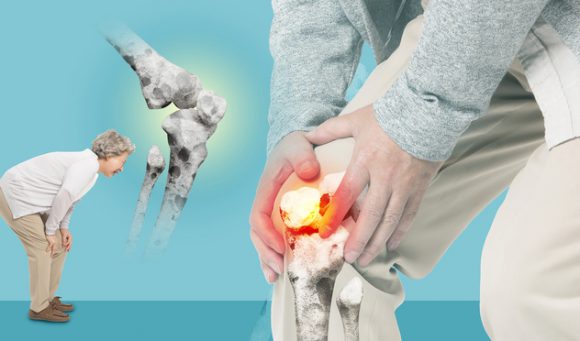A patient in his early 70s who was diagnosed with osteoporosis in a bone density test three years ago did not receive treatment because he had no symptoms at the time, but returned to the hospital with a sudden onset of back pain. Osteoporosis worsened, and the pain was due to compression fractures in the 2nd and 3rd lumbar vertebrae.
According to the Health Insurance Review and Assessment Service statistics, the number of osteoporosis patients reached about 1.05 million in 2020, and it is a common disease that occurs in 3 to 4 out of 10 women over 50 and 1 in 10 men, and is increasing every year.
Osteoporosis is a skeletal disease that increases the risk of fracture due to weakening of bone strength.
In the case of normal people, as they age, bone mass changes as they go through the process of bone formation and remodeling. In general, people in their 20s and 30s have the greatest bone mass in their lifetime, and then, until the age of 50, bone resorption and bone formation, which are the processes of bone remodeling, are balanced, and bone mass is generally maintained or only a slight decrease in bone mass is observed. Later, due to the deficiency of female hormones, bone resorption increases and bone formation gradually decreases with aging, leading to osteoporosis.
Osteoporosis is often referred to as a “silent disease” because many people do not feel special symptoms even when the amount and quality of bones are low.
For osteoporosis patients, it is recommended to have a regular check-up once a year. In addition, the elderly (females over 65 and men over 70), smoking, heavy drinking, a family history of osteoporosis, underweight (BMI <18.5), menopause due to surgery, and spontaneous menopause before the age of 40 should be tested. it is recommended that
The National Health Check-up provides bone density testing (spine) for women aged 54 and 66 years. In addition, women over the age of 65 and men over the age of 70 can be tested for benefits.
How is osteoporosis screening done?, How do I view the test results??
The diagnosis of osteoporosis is made through a bone densitometry test called dual energy X-ray absorptiometry (DXA). It is a simple way to scan with the device by lying in bed looking at the ceiling for 5 to 10 minutes.
After taking the test, you will get a numeric result (T-score). It is a number compared with the average value of bone density of young adults in their 20s, and as the minus increases, it is considered that the bone density is low.
If osteoporosis is diagnosed, it should be treated to prevent further bone weakness and lower the risk of fractures. Most of the treatment of osteoporosis is drug treatment, and the role of the therapeutic agent is to inhibit bone resorption and promote bone formation. Bone resorption inhibitors are drugs that increase bone density by inhibiting the action of osteoclasts that interfere with bone formation.
A balanced diet should contain enough protein, calcium, vitamin D, and minerals. In particular, vitamin D and calcium are essential nutrients for the prevention and treatment of osteoporosis. In addition, salty foods increase the excretion of calcium by the kidneys, so you should eat bland and reduce your intake of soda and coffee.
If the source of all diseases is stress, exercise is the best way to prevent all diseases. Regular exercise is beneficial not only for bone health, but also for building muscle. Invest 30 minutes a day, and it is good to combine light walking exercise and strength exercise.
Osteoporosis, which comes silently, is not easy to cure, but let’s maintain bone health through continuous management.

Editor [email protected]
Copyright ⓒ ‘Honest knowledge for health’ Comedy.com (https://kormedi.com) / Unauthorized reproduction-redistribution prohibited
–


